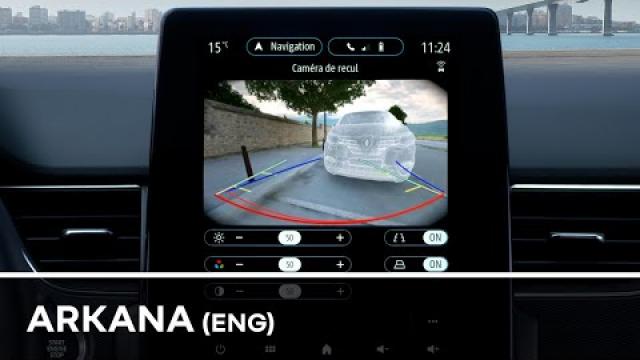REVERSING CAMERA
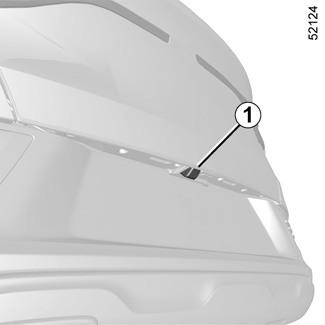
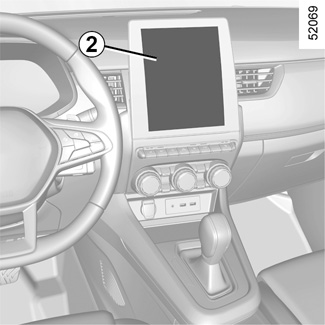
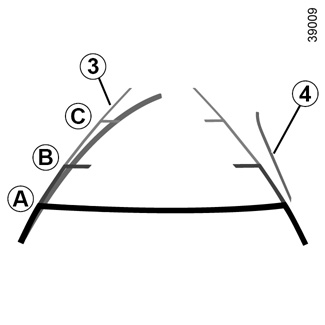
Operation
When the vehicle is reversing, the camera 1 on the luggage compartment lid transmits a view of the area surrounding the rear of the vehicle to the multimedia display 2 accompanied by two guiding lines 3 and 4 (fixed and mobile).
This system uses several guidelines for its operation (mobile for trajectory and fixed for distance). When the red zone is reached, use the bumper image to stop accurately.
Fixed clearance gauge 3
The fixed clearance gauge comprises coloured markers A, B and C indicating the distance behind the vehicle:
- A(red) approximately 30 centimeters from the vehicle;
- B(yellow) approximately 70 centimeters from the vehicle;
- C(green) approximately 150 centimeters from the vehicle.
This gauge remains fixed and indicates the vehicle trajectory if the wheels are in line with the vehicle.
4 moving guide line:
This is shown in blue on the multimedia screen 2. It indicates the vehicle trajectory according to the position of the steering wheel.
Special feature
Make sure that the camera is not obscured (by dirt, mud, snow, condensation etc.).
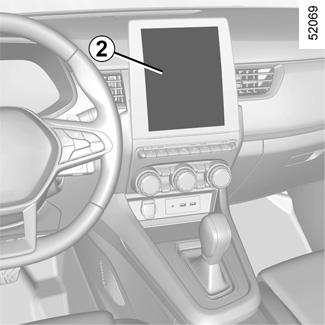
Settings
While the engine is running, from the multimedia screen 2 you can add or remove the guides and adjust the camera image settings (brightness, contrast etc.). Please refer to the multimedia instructions for further information.
The screen shows a reverse mirror image.
The frames are a representation projected on a flat surface. This information is to not be taken into account when superimposed on a vertical object or an object on the ground.
Objects which appear on the edge of the screen may be deformed.
In very bright light (snow, vehicle in sunshine, etc.), the camera vision may be adversely affected.
If the boot is open or poorly closed, the message “WARNING: Boot Open” appears and the reversing image could be disappeared.
This function is an additional aid. It cannot, therefore, under any circumstances replace the vigilance or the responsibility of the driver.
The driver should always be ready for sudden incidents while driving: always ensure that there are no small, narrow moving obstacles (such as a child, animal, pushchair, bicycle, stone, post, etc.) in the blind spot when manoeuvring.
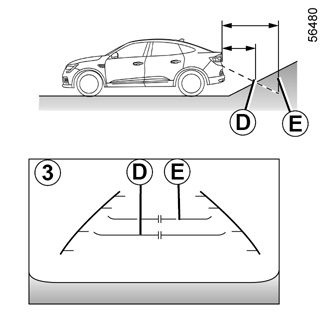
Difference between the estimated distance and actual distance
Reversing towards a steep uphill slope
The fixed guidelines 3 show the distances as closer than they actually are.
The objects shown on the screen are actually further away on the slope.
For example, if the screen displays an object at D, the actual distance of the object is at E.
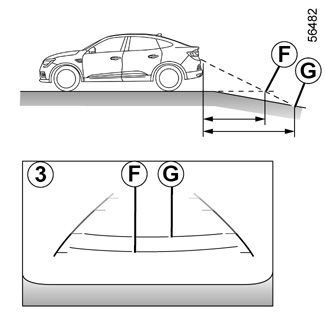
Reversing towards a steep downhill slope
The fixed guidelines 3 show the distances as further than they actually are.
Therefore, the objects shown on the screen are actually closer on the slope.
For example, if the screen displays an object at G, the actual distance of the object is at F.

Reversing towards a protruding object
Position H seems further than position J on the screen. However, position H is at the same distance as position K.
The trajectory indicated by the fixed and mobile guidelines do not take into account the height of the object. So there is a risk that the vehicle may collide with the object when reversing towards position K.
